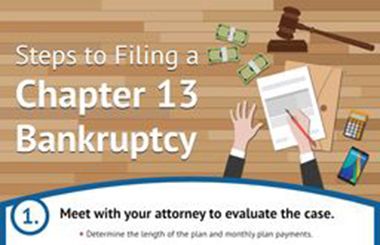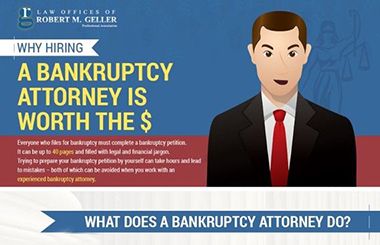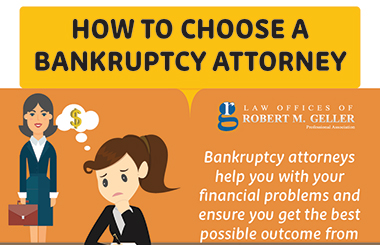Filing Chapter 13 Bankruptcy
- Meet with your attorney to evaluate the case.
Determine the length of the plan and monthly plan payments.
The plan length should be 36 to 60 months.
Chapter 13 cases are usually filed for those who are behind on their mortgage and are not eligible for Chapter 7 because they: Make too much money, have too many assets, or debt that needs to get paid such as debt that is not dischargeable like alimony, child support or certain income tax. - Do your homework.
Give your attorney info about income, debts, and assets.
Provide pay stubs and income tax returns. You must include the last four years of tax returns and give your attorney the previous two years’ returns.
It’s likely your attorney will need pay stubs for the last seven months.
Income from a pension or Social Security should show the actual amount paid (including child support.) - Complete a credit counseling course online or over the phone.
Credit counseling is mandatory for everyone filing for bankruptcy. An approved course must be offered by a non-profit budget and credit counseling agency that has officially been evaluated and approved by the United States Treasury.
- Meet with the attorney to review the documents needed to file the case.
Your attorney has everything required to determine your approximate monthly payments and payment plan.
You can review the documents to ensure everything is disclosed and correct. - Start your monthly payments based on the information from your attorney.
After you receive the info from your attorney, you must make the first payment 30 days afterward.
Make payments on time or your case will be dismissed.
You’ll receive a letter from the trustee two weeks after signing the case. - Attend a meeting with your Chapter 13 trustee within the 45 days of the date the bankruptcy documents were signed.
Bring your social security card and driver’s license.
Your attorney attends the meeting with you.
You testify under oath
Questions are similar to those asked by the attorney when you signed the documents. - In most cases, you don’t have to go to court after the trustee meeting.
You must give the trustee your annual tax returns and refunds.
Notify proper parties when you have:
Changes in income, entitlements to life insurance benefits, claims that you may be entitled such as a personal injury claim
Get the court’s permission before buying or selling anything or before assuming new debt. - Debtor Education Class
Prior to the closing of your bankruptcy case, you must complete a debtor education class which takes about 1 hour and sign an affidavit that states you are current on child support or alimony if applicable.
- Bankruptcy Discharge
Once you make the final payment, you’ll get the bankruptcy discharge in 45 days, which means you no longer owe payment on the debts that were discharged and creditors cannot collect money from you on these debts.
- Credit Building Program
When you get the release, our law firm gives you access to a program to help you rebuild your credit within 12 to 24 months.
- Credit Report Accuracy
Get your credit report after three months of the discharge. You and your attorney will review it for accuracy.
Steps to Filing a Chapter 13 Bankruptcy – Infographic
The Law Offices of Robert M. Geller makes it easy!
At the Bankruptcy law firm of Robert M.




























![Signs That You May Need to File Bankruptcy [Infographic]](https://djml3wkzi26ea.cloudfront.net/wp-content/uploads/2021/01/signs-chap7-v-chap13.jpg)
![How To File for Bankruptcy [Infographic]](https://djml3wkzi26ea.cloudfront.net/wp-content/uploads/2020/07/bankruptcy-steps-infographic-web.jpg)










